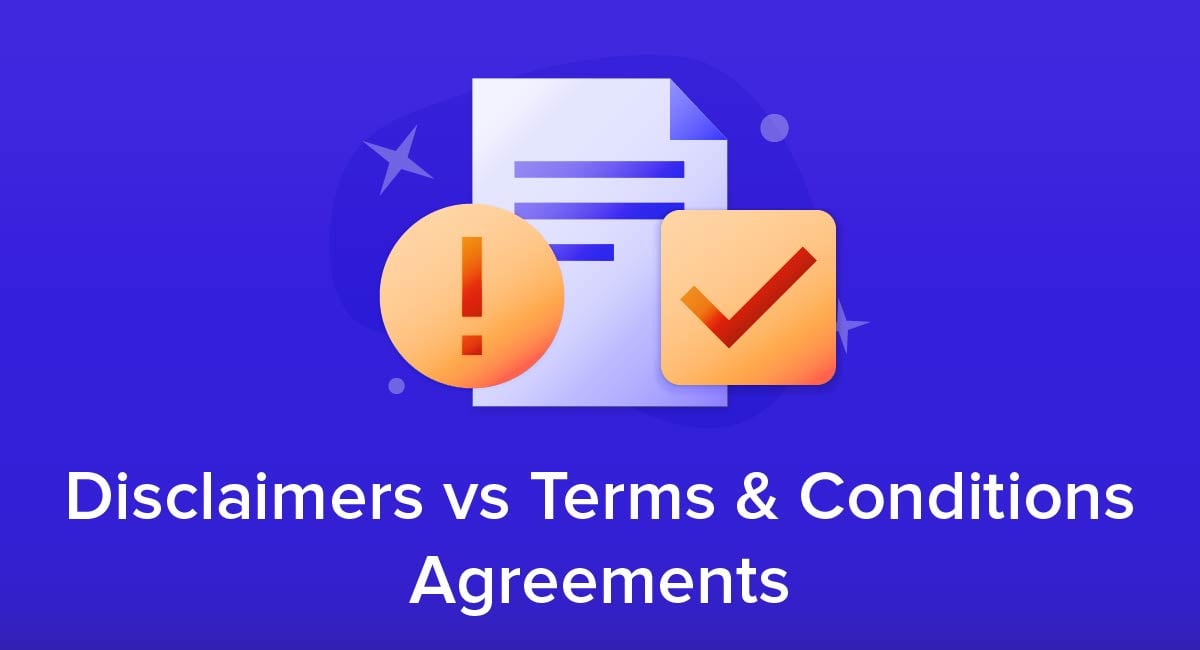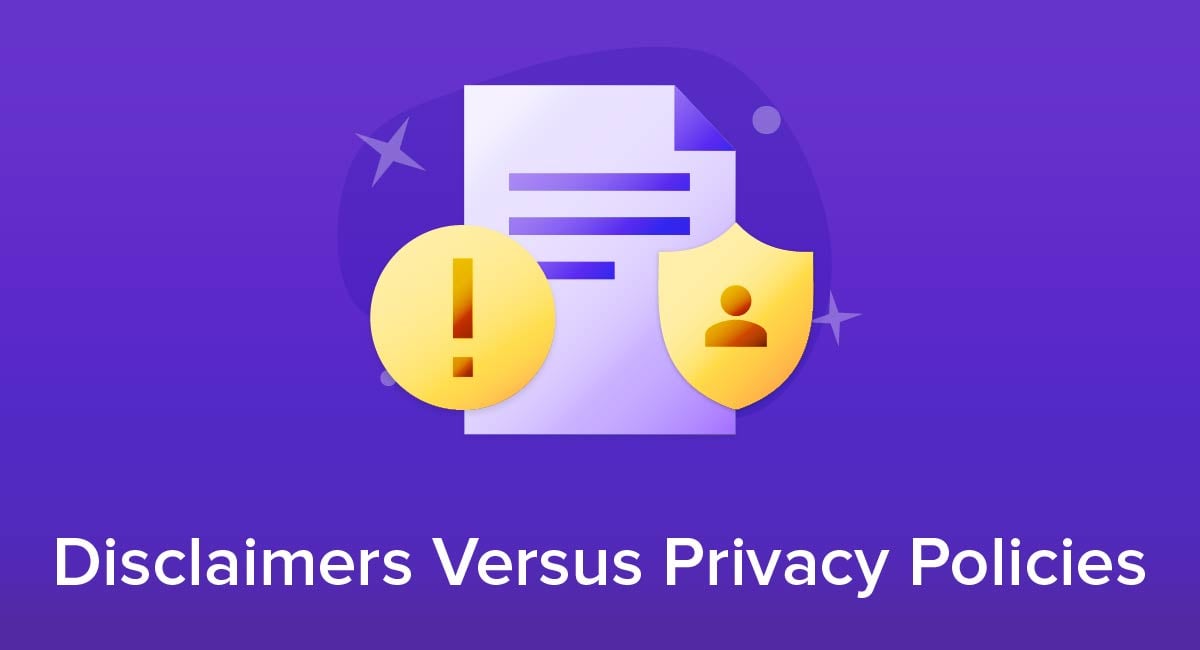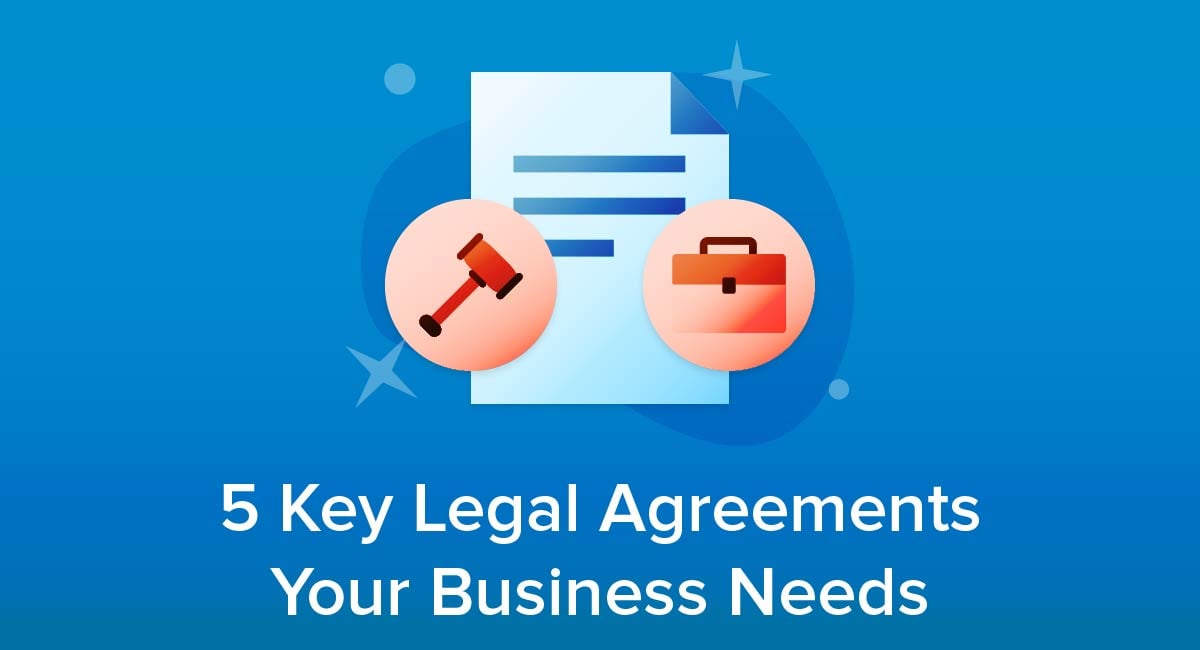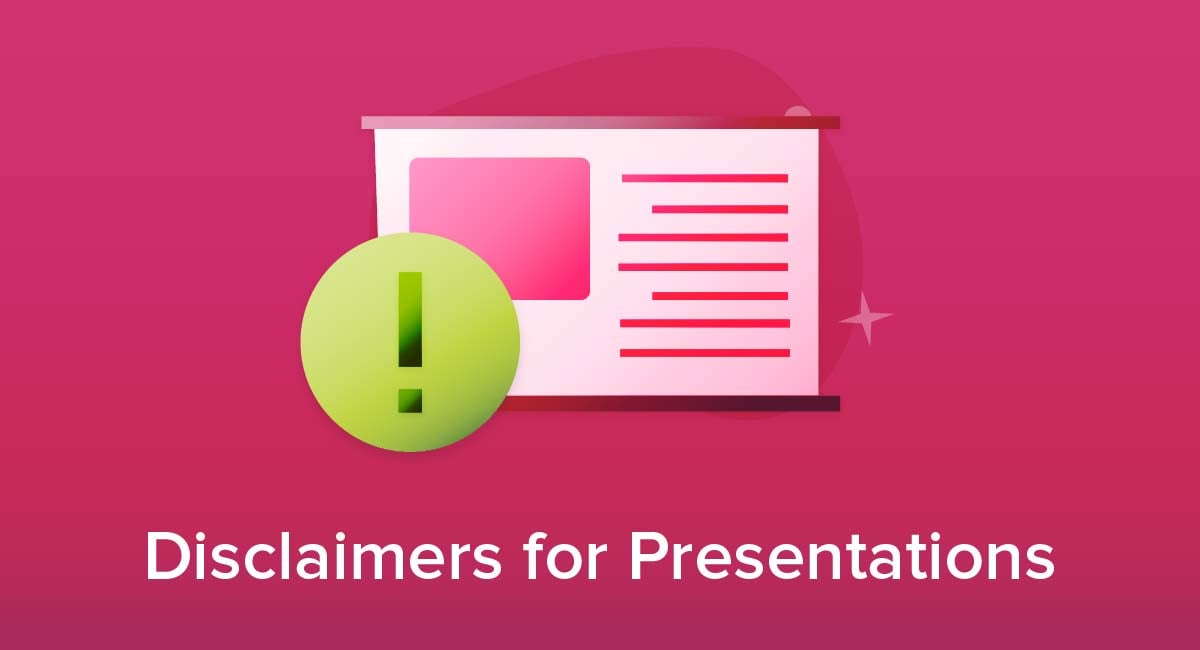
When creating a presentation, you'll be focused on including all the key information you want to convey. But you'll also want to make sure you establish credibility and authority in yourself or your organization.
One thing that's easy to overlook when creating a presentation is the need for disclaimers. Disclaimers can help with both conveying information in a professional way, establishing your credibility, and limiting your legal liability for any of your presentation's content.
Here's what you need to know about drafting and displaying the most important disclaimers to consider adding to your presentation when applicable.
Our Free Disclaimer Generator is designed to help you comply with the requirements of various affiliate programs, such as Amazon Associates. It also includes various disclaimers like medical disclaimer, fitness disclaimer, website disclaimer and so on.
Just follow these few simple steps and generate a Free Disclaimer for your site or your app:
- Start by choosing the "Free Disclaimer Generator" on our site.
-
Then select where your Disclaimer will be used on:
-
Follow with adding your website/app information:
-
Enter the country and click on the "Next Step" button:
-
Continue with building your Disclaimer and answer on questions about your business from our wizard:
-
Now just enter your email address where you'd like your Disclaimer sent and click on the "Generate" button.
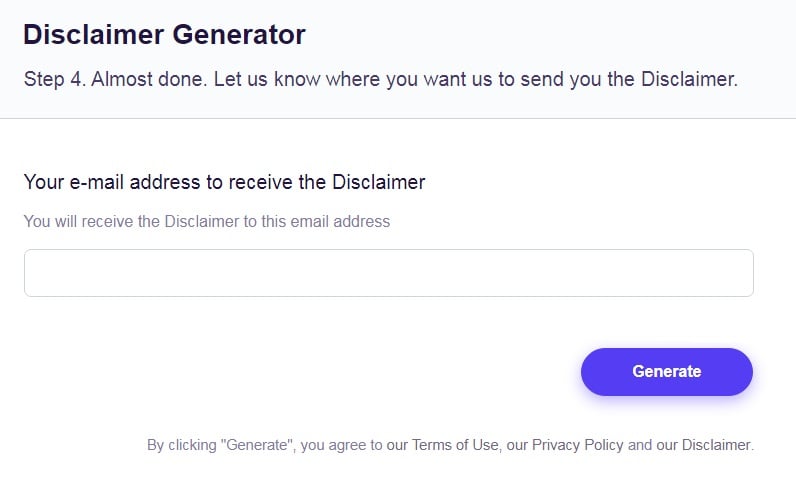
You're done! You can copy and paste your Disclaimer code into your website/app, or link to your hosted Disclaimer page.
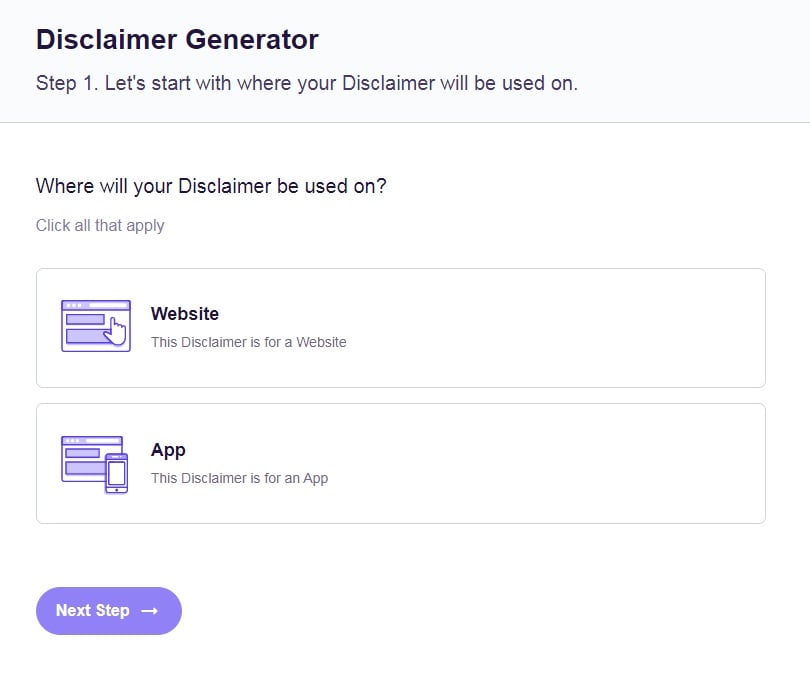
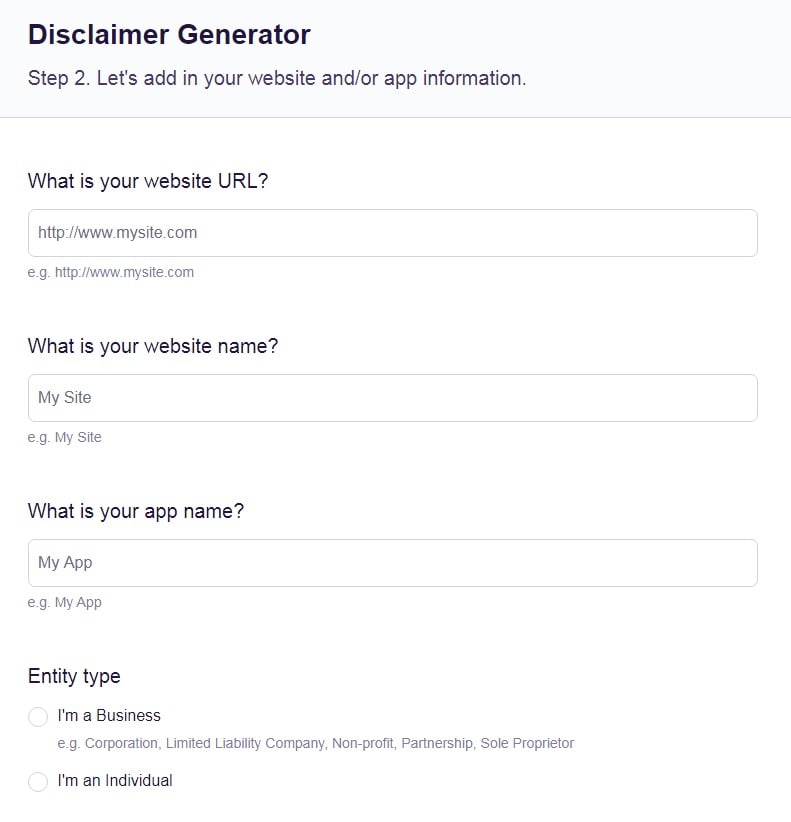
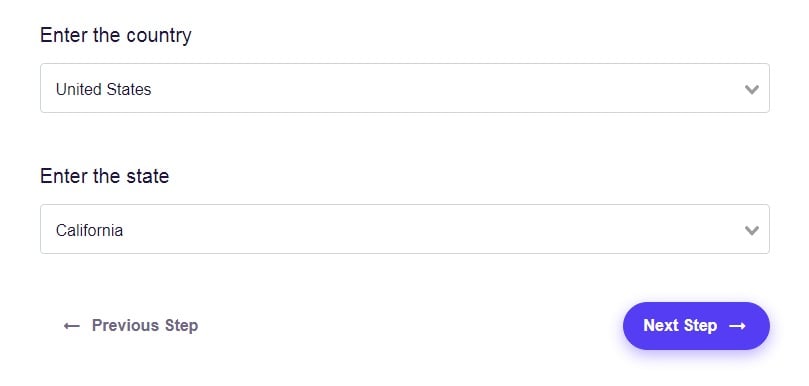
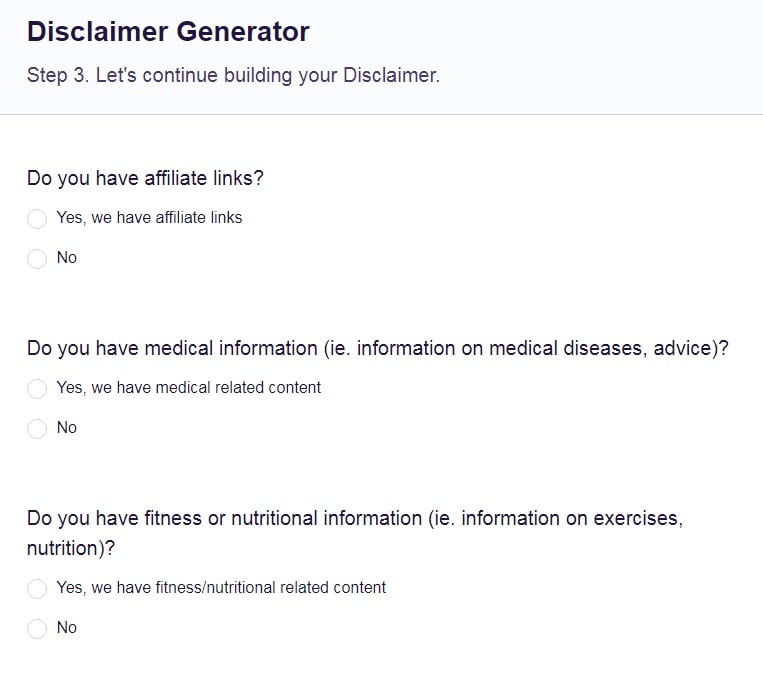
What Disclaimers Should My Presentation Have?
There are a number of different types of disclaimers that your presentation may benefit from.
Depending on the content of your presentation, the industry you're in, and who your audience is, you may need any or all of the following possible disclaimers in your presentation.
Very few disclaimers are legally required (such as affiliate disclaimers), yet all disclaimers convey legal benefits when you use them. The biggest legal benefit is that they help you avoid legal liability.
For example, say you give a presentation on how to tackle a health issue. A medical disclaimer can help you avoid being held responsible if someone follows your health advice and does not heal or get better from the health issue.
Let's take a look at a variety of different disclaimers that may be perfect for your presentation.
Views Expressed
A views expressed disclaimer is all about making clear who you represent when giving the presentation. Including such a disclaimer reduces the risk that something you say or show could be attributed to somebody else, such as an organization you're affiliated with.
This disclaimer can be very beneficial and help to avoid problems in the following cases:
- You're discussing a controversial topic
- The organization has a different official view than the one your presentation expresses
- The organization intentionally does not express views on the subject or must remain neutral, yet your presentation takes a stance on something
- You are giving a presentation where you are introduced as holding a position in, or being certified by, an organization but you are not speaking on its behalf
- You need to make clear your views aren't necessarily shared by the organizers of an event where you are giving a presentation
Here's an example of a views expressed disclaimer in a presentation for UNCTAD:
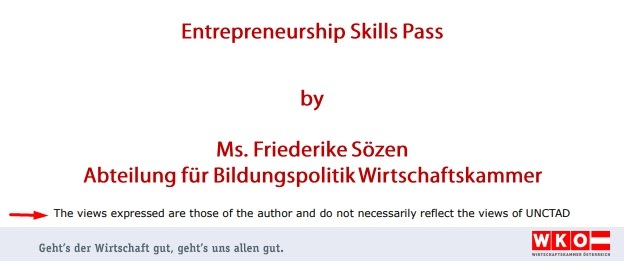
A views expressed disclaimer simply needs to make it clear that the views are yours alone, and then specify that they don't necessarily represent the relevant organization's point of views or opinions.
For Educational Purposes Only
While describing a presentation as being for "educational purposes only" appears to involve teaching, what really matters is that this disclaimer removes any suggestion it could serve another purpose.
Some of the possible misinterpretations of the presentation you could avoid with a disclaimer are as follows:
- It is intended as an instruction or advice on what audience members should do.
- It represents expert advice in a regulated field such as law, finance or medicine.
- You are guaranteeing that the presentation is accurate and that people can rely on the information.
On rare occasions, you may use the term "educational purposes only" to indicate that people cannot use any of the content of the presentation in the course of business.
Because "for educational purposes only" can cover a wide range of situations, you should not simply use the phrase without context. Instead, always make clear exactly what you are disclaiming by using the phrase.
The Society of Actuaries gives a clear disclaimer that includes the necessary context:
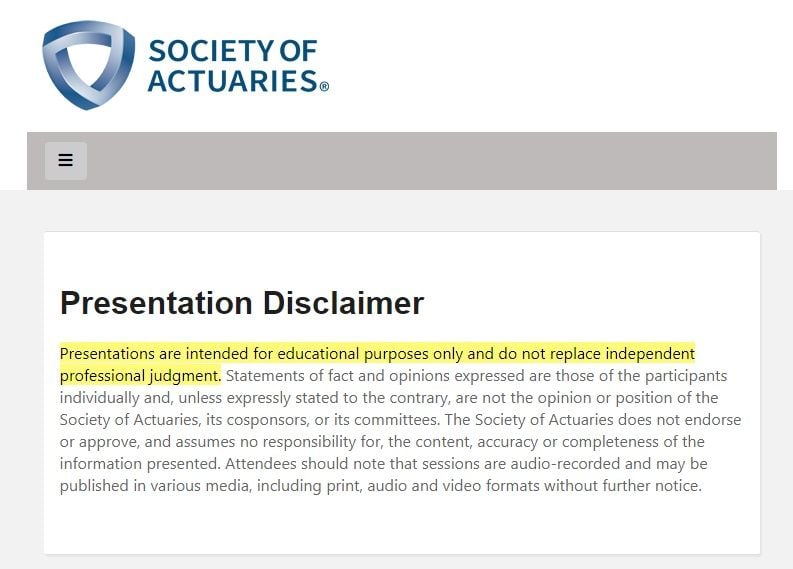
Copyright
When mentioning copyright in a presentation, you could be addressing:
- Your copyright on the content of the presentation
- Your use of copyrighted materials in the presentation
When covering your copyright, you need to note:
- You hold (and are asserting) the copyright on the presentation
- If and how you give permission for people to use the copyrighted material
In many jurisdictions, it's not strictly necessary to have a copyright statement as you automatically hold the copyright once you create the presentation.
In some jurisdictions, asserting your copyright may make it easier to seek damages from somebody who infringes your copyright. In either case, the copyright statement may deter people from intentionally infringing your copyright and reduce the chances of unintentional infringement.
This University of Rochester presentation clearly establishes copyright ownership and restrictions:
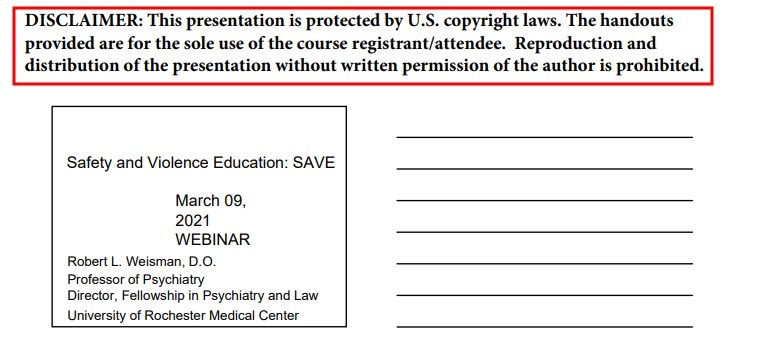
Fair Use
A fair use disclaimer is not about the audience using material from your presentation. Instead, it addresses your use of other people's material in your presentation, specifically material that's protected by copyright.
The rules on fair use vary significantly across jurisdictions, so you should always check prevailing laws before relying on it.
As a very generalized principle, "fair use" allows you limited exemption from the usual ban on using copyright material, in limited and specific situations. These can include using the material for teaching, news reporting, criticism and research.
Whether something counts as "fair use" may depend on:
- How much material you reproduce
- What proportion of the entire copyrighted work this represents
- Whether you make money from using the material
- Whether your use affects the copyright holder's ability to make money from the work
A fair use disclaimer should establish:
- Who holds the copyright (and your acknowledgement that this is the case)
- That you are relying on the fair use exemption
- That you are not endorsing, condoning or encouraging other people to use the material
The All-Creatures site covers all the key elements of fair use in this disclaimer:

Errors and Omissions
An errors and omissions disclaimer is most commonly associated with contracts and Terms and Conditions agreements, but it also plays a role in presentations.
In both contexts, the key point is that you are making clear you aren't responsible for anything you get wrong or forget to include in your content, such as a presentation.
In most jurisdictions you can't simply rely on this as an absolute disclaimer. Instead, it's usually only valid in cases where you make a genuine mistake or accidentally leave something out. It's also unlikely to have much effect in cases where you've acted recklessly, for example by giving information without checking if it's accurate.
You shouldn't rely on an errors and omissions disclaimer as a guaranteed protection against legal action. Think of it more as establishing "fair play" with the audience. You'll do your best to give accurate and complete information and they'll keep an eye out for any possible mistakes rather than simply assuming everything is guaranteed to be correct.
Le Bonheur Children's Hospital goes into detail with its disclaimer, which it displays before the sign-in link to a virtual presentation:
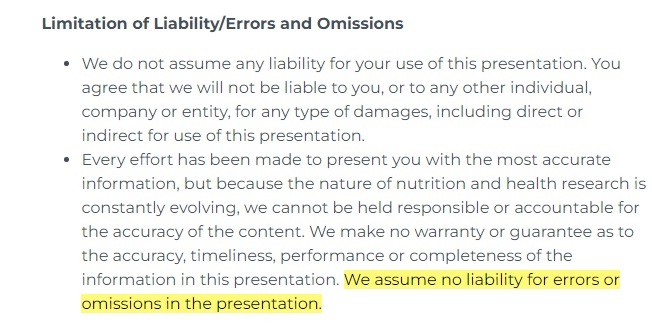
Use at Your Own Risk
In principle, this disclaimer is saying that people can't hold you responsible if they claim you said they could or should have done something and then something goes wrong.
The key is that you establish that the reader or listener must make their own decision about doing something and then they must take responsibility for the consequences. Not you.
In some cases this disclaimer may seem redundant. It's most suited for cases where:
- You are (or appear to be) explaining how to do something
- There is a risk of injury, damage or other negative outcomes from the activity you're discussing or promoting
Remember that even if you have such a clause, you should also make clear if your presentation is or is not meant to give advice in regulated areas such as investment or health.
The "use at your own risk" warning comes as part of a wider disclaimer in this Swiss Re Centre For Global Dialogue presentation:
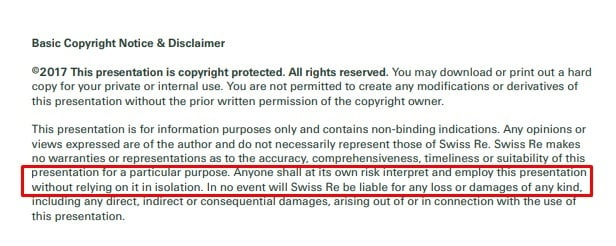
Confidentiality
A confidentiality disclaimer highlights that some or all of the information in a presentation must not be repeated or shared elsewhere. A common example would be when discussing financial information about a company or talking about internal operational matters.
Ideally your disclaimer would make it clear:
- What information is confidential
- Why the information is confidential (if it's not obvious)
- The audience agrees to respect this confidentiality as a condition of viewing or attending the presentation
Moovly set out its confidentiality rules in a presentation to investors:

Now that you've seen some examples of the types of disclaimers your presentation should have or could benefit from having, let's look at some tips for drafting your own disclaimer.
How to Write a Presentation Disclaimer

When you use text in a presentation, you often need to make it quicker and easier to read than with a contract or other legal document that people can read at their own pace. You'll also be limited in how much text you can show on screen at a time.
The key is to convey the most important elements of the disclaimer without wasted words.
Some ways to do this include:
- Cut out anything that is repetitive or padded. You only need to make each point once.
- Try to keep to making only one point in a sentence.
- Use an active voice ("We hold the copyright on this presentation") rather than the passive voice ("The copyright on this presentation is held by us"). Using an active voice usually leads to clearer and shorter sentences.
- Watch out for terms and phrases that sound "more legal" but don't add any meaning or clarity. Avoid legalese whenever possible.
How to Display a Presentation Disclaimer

When and how to present a disclaimer in a presentation will usually depend on what disclaimer or disclaimers you are using. The idea is to balance making sure people will see them, without overloading the audience and distracting from the presentation itself.
Here are some guidelines:
- The most important disclaimers could appear at the bottom of every page, slide or screen. This will often include confidentiality disclaimers where you don't want any ambiguity.
- Some disclaimers work best directly alongside (or immediately before) the relevant information. This could include fair use disclaimers that likely cover only specific parts of your presentation.
- Many disclaimers work best at the start of your presentation. If you put them only at the end, there's a risk people may not see them. In most cases, you are safe putting most or all of your disclaimers at the start.
23andMe started a presentation with a detailed confidentiality notice, but put this reminder at the bottom of every page to make clear the entire presentation was confidential:
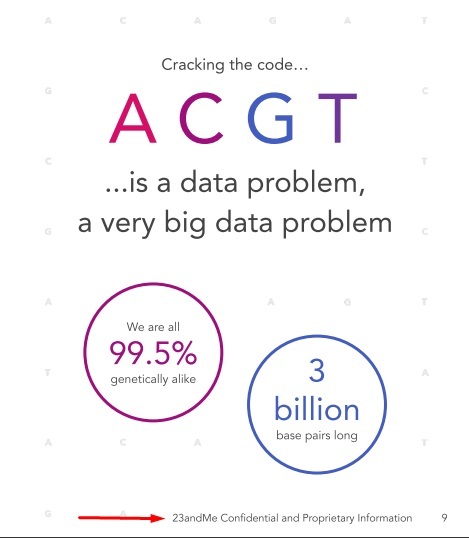
Summary
Let's recap what you need to know about disclaimers in presentations.
You may benefit from any or even all of the following disclaimers:
- Views expressed makes clear when you are or are not speaking on behalf of an organization.
- For educational purposes only makes clear you aren't giving advice or instructions.
- Copyright disclaimers can cover your own copyright in the presentation or your use of copyrighted material.
- Fair use clarifies how and when you use copyrighted material without getting permission.
- Errors and omissions disclaimers mean you don't take responsibility for any mistakes or anything you've left out.
- Use at your own risk is most suited to cases where you explain how to do an activity that carries risk of harm or damage.
- A confidentiality disclaimer makes clear when an audience can and cannot share or repeat information from the presentation.
Disclaimers could work best at the bottom of every page or screen, immediately before the relevant text, or at the start of the presentation. The context is key.
Use clear language, familiar words, the active voice and short sentences when writing disclaimers for presentations. Avoid unnecessary formality and complexity.
